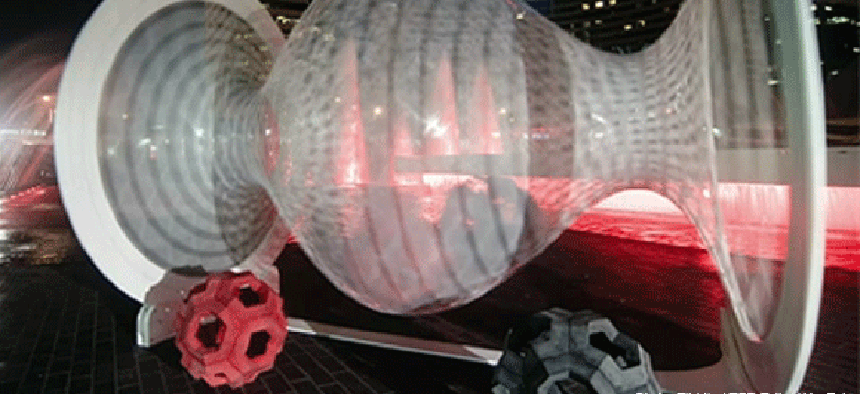3D printing is yesterday's news -- time for 4D?


Connecting state and local government leaders
An MIT engineer is working on developing 3D-printed objects that would change over time -- and even build themselves.
Those of you who have been following along with this blog know that I'm a big fan of 3D printing, and think its uses in government will go well beyond even what is being done so far — which is considerable, like printing out tools in places like Afghanistan where hardware stores are few and far between. The possibilities are becoming even greater now that 3D printers are coming down in price, with units going on sale for as little as $200.
But now, 3D printing may soon be passé, replaced by 4D printing. MIT engineer Skylar Tibbits spoke at a recent TED conference about how objects could be printed and exist in one state, but would change to a different one over time. The printed object might react to moisture or heat or other environmental stimuli, and then change its form without any human intervention.
At TED, Tibbits showed examples of printing in everything from 1D up to 4D. The secret to 4D printing is that the printer must be capable of producing components in different states. That would mean that part of the structure would react to the stimuli, while the rest holds firm. In his example, a straight line that was printed in 3D was submerged in water, whereupon it formed a cube.
Tibbits has come close to self-assembly robots in the past. He showed examples of machines that, when fed random motion, can form other objects, and may one day build other machines.
While 4D printing is still theoretical, Tibbits told CNN he envisioned a world where structures are built in dangerous or harsh environments without the need for humans to risk their lives. The 4D printed materials would be dropped into place and then assemble themselves. It seems fantastic, but watching the demo shows that he's already doing it on a small scale. Other potential uses include utility pipes that carry water and expand or contract with capacity, or even undulate and move the water themselves without the need for any actual pumping equipment.
In truth, 4D printing is really just a subset of 3D printing, with different materials that can induce a state change. In a way, it kind of sounds a bit like what the Defense Advanced Research Projects Agency is looking for, with its plan for electronics that would dissolve when left behind on the battlefield. Tibbits may be thinking more along the lines of creating something, but it’s a state change either way.
It’s another indication of how quickly things are progressing with additive manufacturing, that we might get to the fourth dimension before we master the first three.
NEXT STORY: Agencies should know the 4 types of gamers




